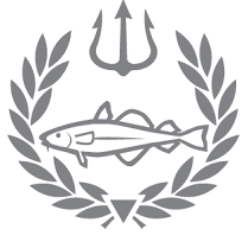This past week I spent time with Ted Maney, at Salem State University, collecting data from an ongoing research project which included counting sea urchins and other mobile fauna off shore. Since there were two other people joining us, Ken and Breckie, we had a tight squeeze onto a twenty-foot center console. In case you were wondering, that’s twelve tanks and at least a hundred pounds worth of gear. Truth be told, I was a bit nervous – this would be my first time diving with my new DUI drysuit, and there was a decent current that could pull us away from the boat. But among the hundred pounds of gear, there was a line to hold from the boat to prevent drifting. Once we started diving the site at Halfway Rock, my worries disappeared, possibly from the shock of cold water on my face, but more likely because of the excitement of conducting research underwater. Once I laid my quadrat, the work was simple…until I tried writing underwater. Maybe it was the thick gloves, or the tiny pencil, but my urchin counts looked more like preschool scribbles. However, with practice, it became much easier. After one day, I was ready to take on more sites the next day at Shagg’s Rock. On our last day, we searched for lost transponders which had years of data on them. While searching, I realize that the buddy trio was split and I was alone at 90 feet. I did not panic, my computer said my no decompression limit was still high and I had plenty of air. After turning in circles looking for my buddies or their bubbles, I realized the visibility was too poor; they could have been 10 feet away and I wouldn’t have seen them. So, following the lost buddy procedure, I start my ascent while looking for my buddies on the way up. Though I did not find them, I found a bud light around 40 feet (again people ENOUGH with the litter)!!! After a three-minute safety stop at 15 feet, I went to the surface to find both Ken and Breckie. After a quick debrief about how our separation happened, we all had enough air and descended again for our second dive. Unfortunately, we were only able to find one of the lost transmitters. However, the day was a success in my book, I got to apply two important diving skills (search patterns and lost buddy procedures) in a real-life situation. A reminder to my diving friends – always review lost buddy procedures during your pre-dive check, and keep your skills sharp! Thanks again to Ted for inviting me to participate in his research!
